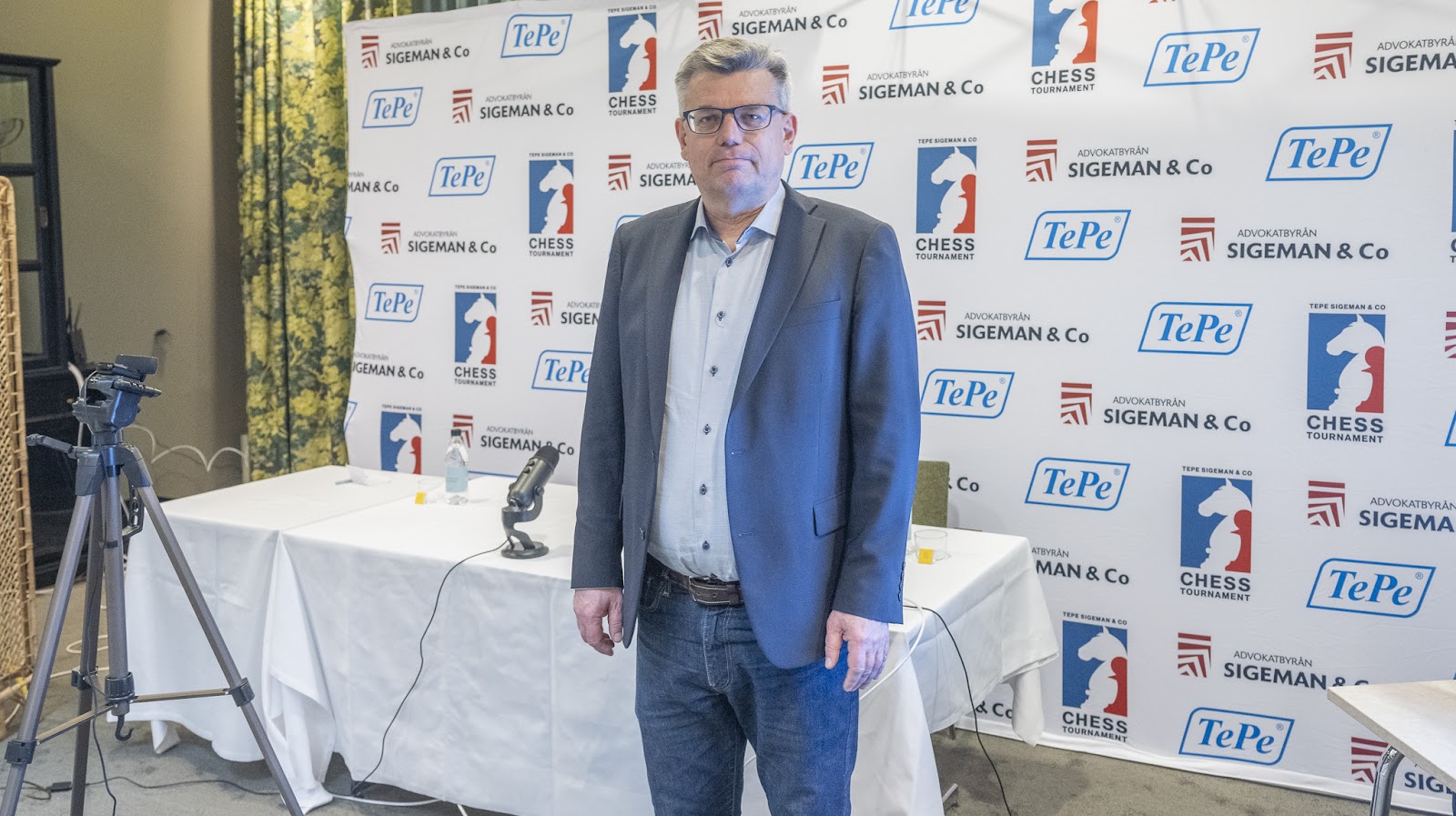
Photo: Lars OA Hedlund.
Maurizzi-Korobov
With the white pieces in the Catalan, Maurizzi played an ambitious pawn sacrifice, with the idea of getting positional compensation. It looked promising for quite a while, but when Korobov was allowed advance his a-pawn all the way to a3, it was clear that black was better. In time trouble, the advantage grew bigger, and after move 40, Korobov could secure the whole point.
Ju-Svidler
Svidler chose to meet Ju’s 1.d4 with a somewhat provocative d6, g6 and later e5. The position got very complicated, but when Ju could not find any better move than returning her queen to d1 on move 14, Svidler was allowed to seize the initiative. After some nice maneuvering, his pair of bishops dominated the board. He made no mistakes, and could break through white’s defences and secure the win.
Abdusattrov-Erigaisi
After the game had started with 1.c4, the opening quickly turned into the Slav Defense. At move 10, Abdusattorov played the surprising move h4. This had the intended effect, since Erigaisi spent a lot of time calculating the following moves. However, he used his time well. It even looked like Erigaisi had some winning chances, with a strong knight versus white’s bishop, but Abdusattorov managed to break through on the h-file, and Erigaisi had to force a draw by repetition. An interesting game between the two top seeds of the tournament.
Keymer-Grandelius
In an unusual variation in the Slav Defense, both players seemed to be very well prepared. The first 19 moves were played at lightning speed. Despite the computer evaluating the position as about even, it was obvious that the pressure was on black, who had to find the exact defense against the coming white attack. Grandelius rapidly lost his way. The unfortunate 22.- Qe7 let white advance his d-pawn, and this was all Keymer needed to start a decisive attack. He finished the game with impressive play in a very sharp position.
